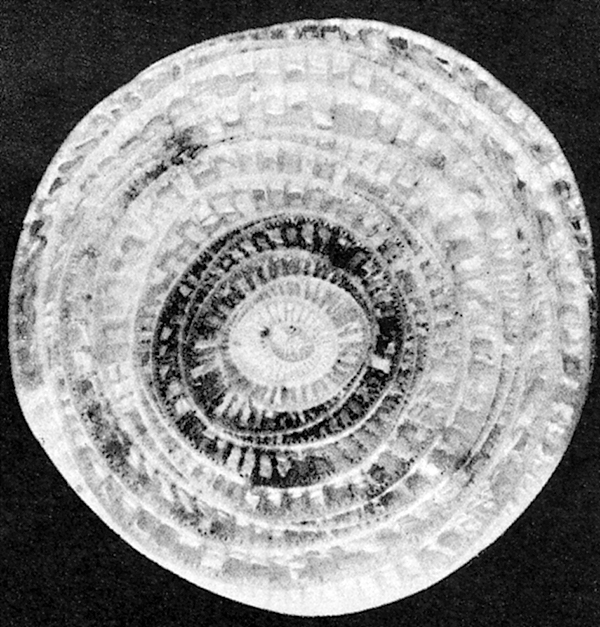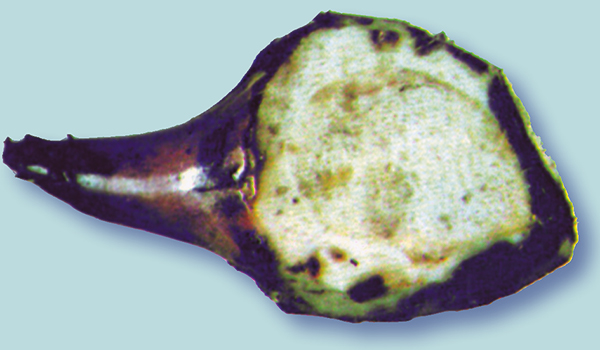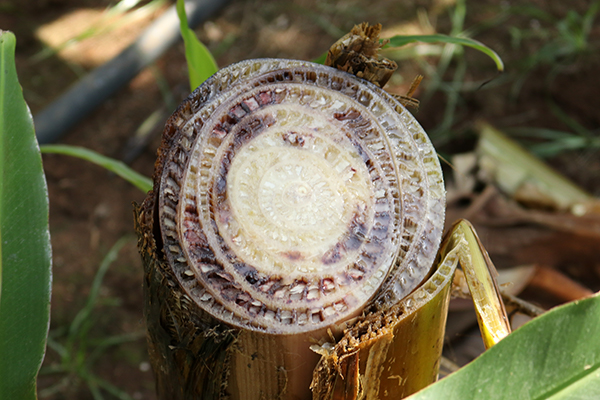Corm smelly, rotting or discoloured
Panama disease (Fusarium wilt) (discoloured)
Biosecurity Alert
Cause: The fungus Fusarium oxysporum f. sp. cubense which is a soil-borne organism. It is spread in water, soil and planting material. It enters the plant through the roots, and blocks the conducting tissue within the plant resulting in wilting, yellowing of leaves, splitting of pseudostem and death of the plant.
Solution: There is no cure for affected plants. Use only approved planting material and do not plant in previously infested areas.
Biosecurity obligation: Panama is a notifiable disease and you must report any suspicious plants. If you suspect Panama disease you must notify Biosecurity Queensland immediately (13 25 23).
More info:

Bacterial corm rot (smelly, rotting, discoloured)
Cause: The bacteria Pectobacterium spp. (formerly known as Erwinia spp.) that are common soil inhabitants. Plants that are stressed during the dry season can succumb to invasion during the wet season.
Solution: No chemical treatments are available. Ensure adequate moisture levels are maintained during the dry season and provide good drainage during prolonged wet seasons.

Moko disease (discoloured)
Biosecurity Alert
Cause: The bacteria Ralstonia solancearum race 2. Moko is a soil-borne disease and is spread with soil, in water, on implements, in planting material and by insects from flower to flower. The infection enters the plant through the roots and spreads through the host, blocking conducting tissue and resulting in plant yellowing, wilting and death.
Solution: There is no chemical control for Moko. All plants plus an adequate buffer zone around the diseased plants must be destroyed. The area must be quarantined and only non-host plants grown.
Biosecurity obligation: If you suspect Moko disease you must notify Biosecurity Queensland immediately (13 25 23).
More info:


